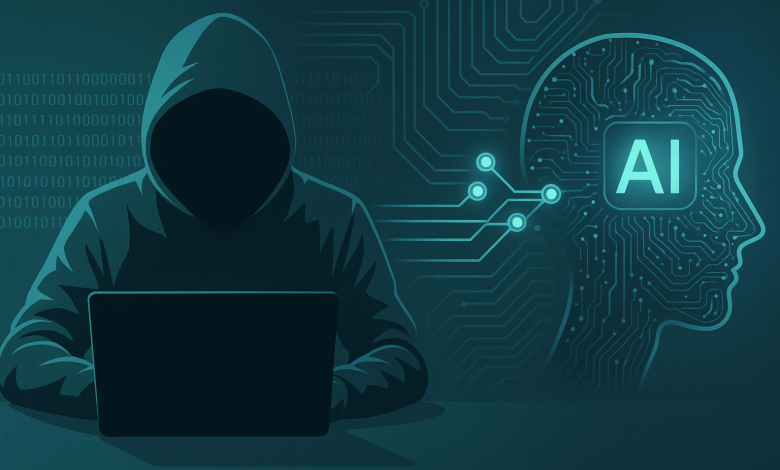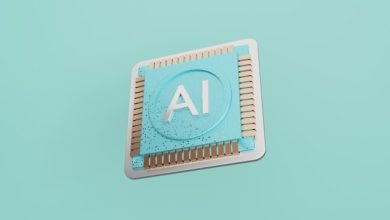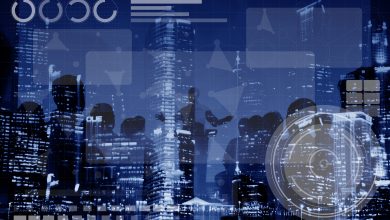
The asymmetry in cybersecurity has always favored the attacker. But AI just rewrote the rules. Attacks aren’t measured in hours or days anymore; they happen at machine speed, probing, adapting, and exploiting faster than humans can blink.
Zero-days used to be lucky strikes. Now, over 30% of exploited vulnerabilities are one-day or zero-day flaws, weaponized in real time. Every device, workflow, and supplier link is a potential domino. One breach doesn’t stay local—it can cascade across the entire enterprise.
Evolving Threat Intelligence for AI-Driven Cyber Threats
AI is transforming cyber threats into agile, autonomous operations. Large Language Models (LLMs) and reinforcement learning enable attackers to automate phishing, business email compromise, data theft, and network reconnaissance, adapting in real time to bypass traditional defenses.
Anthropic reports that LLMs have fully automated ransomware attacks, impacting at least 17 organizations in critical sectors. These attacks, from target identification to payload creation and communication, now occur with minimal human involvement.
The AI Arms Race in Cybersecurity
Cybersecurity has entered a critical phase: AI vs. AI.
As Dr. Katie Moussouris, a pioneer in vulnerability disclosure, warns: “Attackers will leverage AI faster than most defenses can adapt; the window for reactive response is closing in milliseconds.”
Adversaries are automating attacks with machine learning, while traditional defenses struggle to keep pace. Connectivity and automation accelerate operations, but also magnify enterprise risk.
- Attacks That Learn
AI-driven threats are no longer static. Phishing campaigns, ransomware, and lateral movement evolve autonomously, identifying and exploiting weaknesses in real time. This shift transforms isolated attacks into continuous, industrialized operations.
Single Breach, Enterprise Impact – One exploited sensor or system can cascade across operations.
- SOCs Can’t Keep Up
A single compromised sensor, cloud ERP module, or supplier system can ripple through the enterprise, triggering cascading failures. AI accelerates attack progression, turning one overlooked vulnerability into a multi-layer operational crisis. It is a structural mismatch between attack velocity and defense speed.
- Automation Is a Double-Edged Sword
Connectivity and cloud tools accelerate operations. Industrial IoT, integrated cloud tools, and connected workflows improve operational efficiency—but each link also expands the attack surface. Attackers exploit this connectivity, turning operational advantages into exposure.
Setting Up the Next Crisis
Adaptive, AI-driven attacks exploit interconnected systems across the enterprise. Each compromised endpoint, sensor, or cloud service becomes a potential lever, allowing threats to cascade rapidly. Combined with sprawling, complex infrastructures, this creates a systemic vulnerability, where a single breach can trigger widespread operational, financial, and reputational damage.
Industry 5.0 makes this hyper-connected, hyper-fragile. A single compromised sensor can expose supplier data, production schedules, or core IP. The blunt truth? Human-led defenses can’t keep up.
The answer isn’t working harder; it’s machines that heal themselves, detect instantly, and fix before chaos spreads. Welcome to the era where speed is survival, and agility is everything.
The Twin Forces Driving Urgency
Industry 5.0 cranks connectivity to eleven and so does the risk. Adversarial AI attacks entire systems: one sensor can leak supplier data, a zero-day in cloud ERP can halt operations in hours.
History shows the stakes. SolarWinds turned a trusted vendor into a universal backdoor. MOVEit proved that one compromised tool can affect hundreds of organizations. These aren’t anomalies—they are playbooks now automated at scale by AI-driven attackers.
The urgency is real. Accenture’s State of Cybersecurity Resilience 2025, surveying 2,286 cybersecurity and tech leaders worldwide, found that 77% of organizations lack AI-aligned security practices for critical data pipelines, cloud systems, and business models. Threats are moving faster than most defenses can respond.
Current SOC operations are misaligned with attack speed. Human-led detection works in minutes or hours; AI-driven attacks unfold in milliseconds. Alerts lag, data is exfiltrated, systems compromised.
This is a structural mismatch, not a skills gap.
In a hyper-connected enterprise, one breach can ripple across everything. AI moves at machine speed and so must defenses. Systems must heal themselves, detect threats instantly, and remediate before damage spreads.
The Only Viable Defense: AI-Driven, Self-Healing Systems
Adversarial AI moves faster than any human can say “patch it!” Zero-days, supply chain attacks, and automated malware race at machine speed, leaving manual fixes and reactive monitoring in the dust.
Enterprises are fighting back with next-gen detection systems like behavioral analytics, anomaly monitoring, and AI-driven intelligence. Sandboxing and real-time telemetry catch polymorphic code, AI-crafted phishing, and LLM-powered social engineering before attackers even get their coffee.
This is a shift from reactive defense to predictive, machine-speed security, built to stay ahead of autonomous adversaries.
- Continuous Remediation
Production lines, supplier networks, and ERP systems are tightly interconnected, and a single vulnerability can cascade within milliseconds. Rising geopolitical tensions and economic volatility make downtime or data loss far more than costly—it can destabilize operations. Automated, real-time fixes neutralize AI-driven attacks before they exploit these gaps.
- Device Authentication & Zero-Trust Access
Every device, user, and application is continuously verified. In distributed factories and supply chains, one compromised sensor or endpoint can ripple across plants. Zero-trust blocks unauthorized elements instantly, protecting sensitive workflows from both human error and AI-augmented attacks.
- Device Attestation & Remote Control
Abnormal endpoints, whether robotic arms, IoT sensors, or handheld scanners, are immediately isolated, locked, or wiped. Operations continue uninterrupted while threats are neutralized, a decisive advantage when AI-driven attacks strike unpredictably.
- Secure Web Gateway
Threats are stopped at the network edge, with only verified software getting a VIP pass. Category and pattern blocking handle known troublemakers, anomaly detection catches new ones, and cloud app access is tightly controlled. Every click is logged and analyzed. Together, these measures feed AI-driven defenses, forming a foolproof, self-healing system that detects, isolates, and remediates threats before they spread.
- Application Management
Applications too don’t get a free pass. Only verified software runs, and access controls keep rogue apps or unauthorized SaaS from sneaking in. Custom allowlists let critical business tools operate smoothly, while every install, update, and action is logged and analyzed.
- AI-Driven Anomaly Detection
Machine learning continuously monitors connected devices, detecting subtle deviations invisible to humans. Even complex attack patterns are contained before cascading across highly interdependent systems.
The result is systemic resilience. Factories, supply chains, and connected operations run uninterrupted. IP remains protected. Human teams focus on strategy, not firefighting. In a world where attacks scale exponentially, machine-speed defenses aren’t optional—they are the baseline for survival.
Algorithmic Defense: Staying Light Years Ahead of AI threats
The stakes go beyond individual systems. Every connected device, workflow, and pipeline is a potential attack vector. Enterprises investing in homegrown technologies gain more than operational control. Building systemic resilience means plugging every gap before AI-driven attacks can exploit it.
“The future of cybersecurity isn’t human versus machine—it’s machine versus machine. Success will depend on which AI can learn, adapt, and act fastest.” — Dr. Nicolas Christin, Computer Science Prof. at Carnegge University.
Attackers are automating, adapting, and scaling at machine speed. Staying ahead requires autonomous, self-healing defenses that detect anomalies instantly, isolate compromised endpoints, and remediate threats in real time—containing crises before they cascade.
Continuous remediation is the new imperative. Only machine-speed detection and response keeps organizations ahead.
Resilience is algorithmic. Enterprises with self-healing systems, AI-aligned intelligence, and proactive remediation define the standard for security in the era of autonomous cyber threats.





